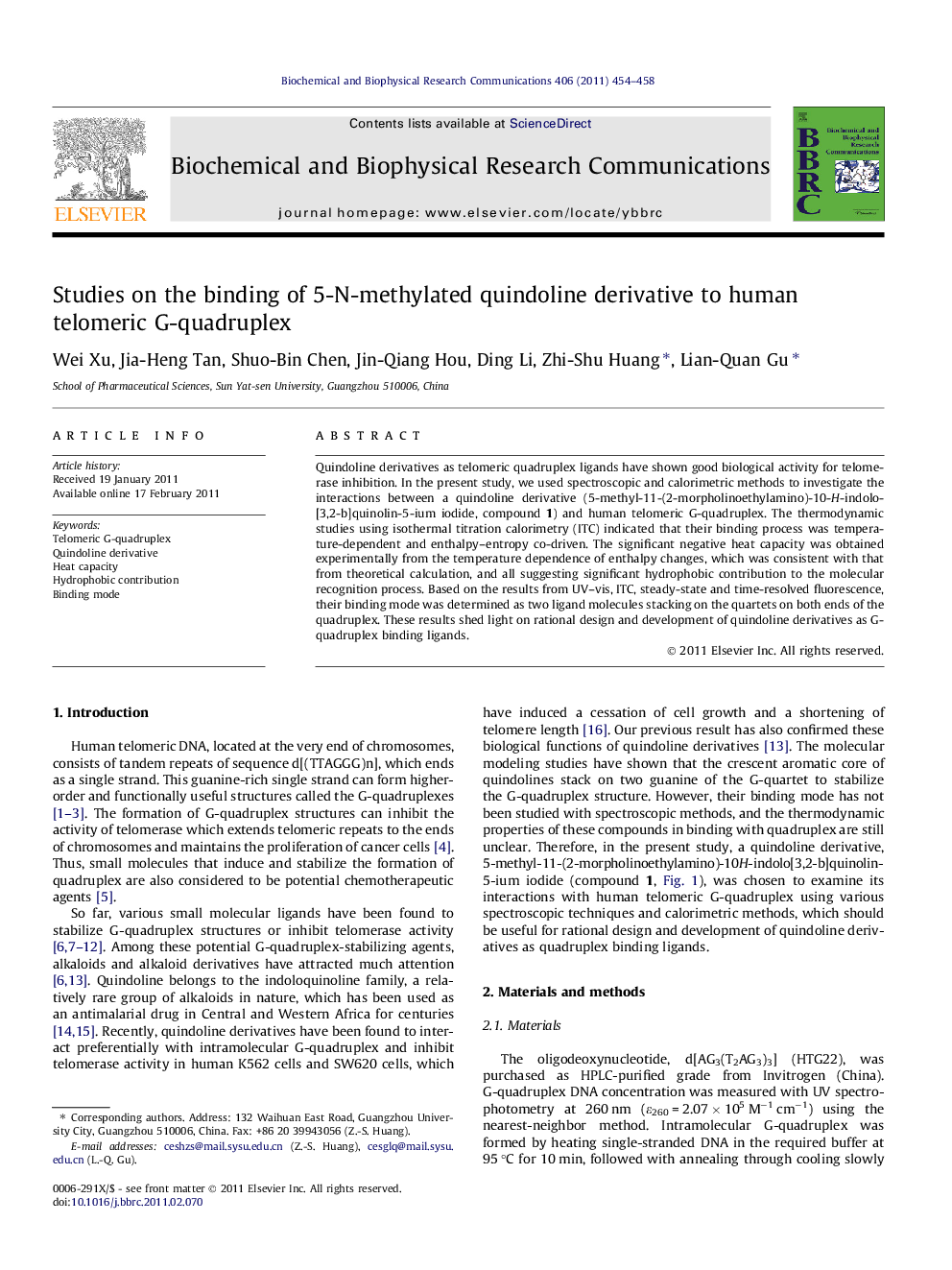| Article ID | Journal | Published Year | Pages | File Type |
|---|---|---|---|---|
| 1930921 | Biochemical and Biophysical Research Communications | 2011 | 5 Pages |
Quindoline derivatives as telomeric quadruplex ligands have shown good biological activity for telomerase inhibition. In the present study, we used spectroscopic and calorimetric methods to investigate the interactions between a quindoline derivative (5-methyl-11-(2-morpholinoethylamino)-10-H-indolo-[3,2-b]quinolin-5-ium iodide, compound 1) and human telomeric G-quadruplex. The thermodynamic studies using isothermal titration calorimetry (ITC) indicated that their binding process was temperature-dependent and enthalpy–entropy co-driven. The significant negative heat capacity was obtained experimentally from the temperature dependence of enthalpy changes, which was consistent with that from theoretical calculation, and all suggesting significant hydrophobic contribution to the molecular recognition process. Based on the results from UV–vis, ITC, steady-state and time-resolved fluorescence, their binding mode was determined as two ligand molecules stacking on the quartets on both ends of the quadruplex. These results shed light on rational design and development of quindoline derivatives as G-quadruplex binding ligands.
Research highlights► Hydrophobic interaction provided an important driving force for the interaction between ligand and G-quadruplex. ► Constrained water molecules were released from surface of G-tetrad upon the formation of the complex. ► The end-stacking mode for quindoline derivative was validated through UV–vis, ITC, steady-state, and time-resolved fluorescence experiment. ► The binding of compound 1 to quadruplex was found to be a temperature-dependent and enthalpy–entropy compensation process.
